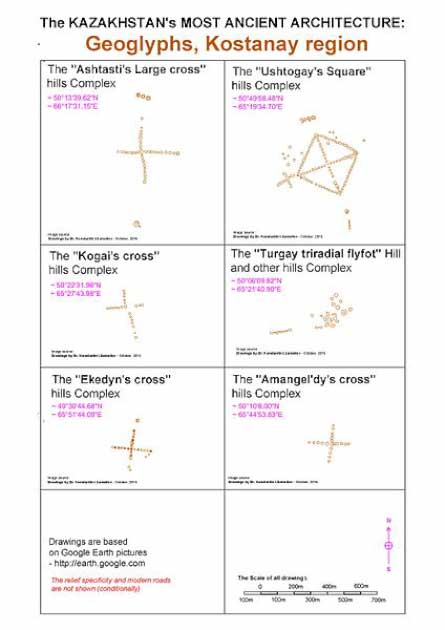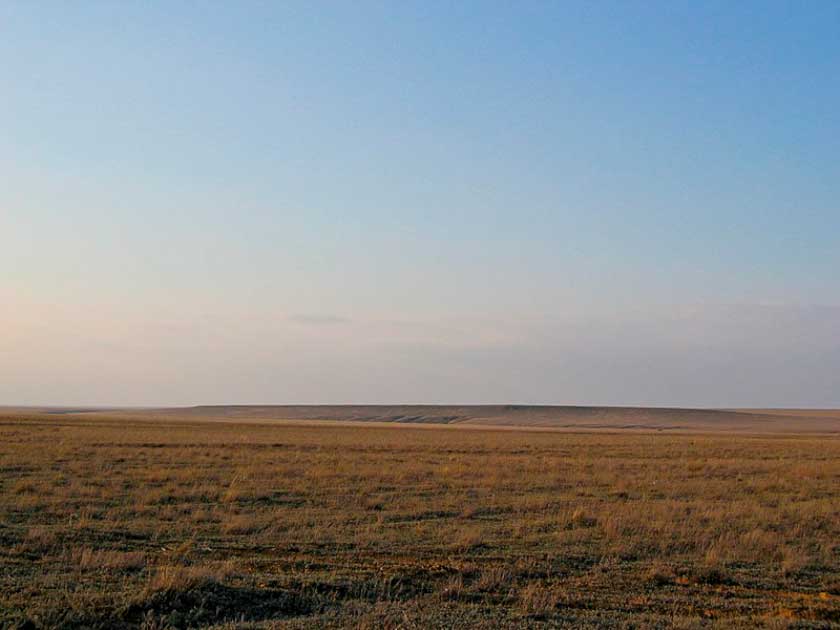Ancient geoglyphs, large designs produced on the ground from earthen materials, can be found across the globe. The Uffington White Horse, a horse carved into the hills of white chalk in Oxfordshire, England, and created between 500 BC and 500 AD, is a good exmaple.
A giant geoglyph of an elk known only as the “Russian geoglyph” in the Chelyabinsk region of Russia dates between 4000 BC to 2000 BC and was only discovered in 2011. In the United States, Native Americans created the Effigy Mounds National Monument in Iowa, which features the shape of birds, bears, turtles, and panthers as the resting place of tribal members from long ago.
The most well-known giant geoglyphs are the Nazca Lines, located around 250 miles (400km) south of Lima, Peru. The Nazca Lines were created by the southern American ancient pre-Columbian Nazca peoples over 2,000 years ago and depict animals, plants, and other abstract shapes.
Although researchers have studied the Nazca Lines for almost a century, the exact purpose the lines served still needs to be discovered. Several geoglyphs in Kazakhstan were found in the mid-2000s by an amateur archeologist playing around on Google Earth. These geoglyphs have been called “The Nazca Lines of Kazakhstan.”
Who built these structures, and what purpose did they serve?
The Nazca Lines of Kazakhstan
The “Nazca Lines of Kazakhstan” refers to a large number of geoglyphs located throughout the “Turgai Trough” area of Turgai in northern Kazakhstan. Geoglyphs are especially puzzling as they are large-scale images or drawings made in the ground by arranging lines of stones, carving/scratching the earth, etc., and are often only fully visible from a distance or in the air.
The Nazca Lines of Kazakhstan, or the Steppe Geoglyphs to give them their official name, were discovered in 2007 by amateur archeologist Dmitriy Dey on Google Earth. If they could only be seen from an orbital picture, the question remains: who was looking at them?

When he stumbled upon the dramatic designs, Dey was looking at satellite images from Google Earth for pyramids and other architectural structures in 2007. Since 2007 Dey has found around 260 geoglyphs in the area, and the oldest of the glyphs is believed to be 8,000 years old.
- Who Made the Serpent Mound, the Largest Snake Geoglyph in the World?
- Nazca Lines of Peru and Recent Findings
The Nazca Lines of Kazakhstan range from 300 to 1,300 feet (91 to 396 m) across, and the best view of glyphs is from space. The Turgai geoglyphs are known as “positive geoglyphs,” which means that they were created using earthen materials to build up the glyph.
In contrast, “negative geoglyphs” are created by removing earthen materials in order to carve channels or canals into the earth’s surface. Dey’s archeological research of the Steppe Geoglyphs was so convincing that NASA agreed to help determine what the shapes in the Turgai depression were through higher-quality satellite images.
There are many geoglyph formations that have been discovered from space in the Turgai Trough; however, there are several significant and named glyphs. One is known as the Bestamskoe Ring, and this geoglyph is a large circle made of almost two dozen smaller circles.
The Ushtogaysky Square glyph is incredibly large and spans 810,000 square feet (75,251 square meters). The square with sides as long as an aircraft carrier has a large X shape that crosses in the center.
The glyph that is the most puzzling to researchers however is known as the Turgai Swastika. It is important to remember that the swastika was a popular symbol in ancient history across the globe for many centuries before Adolf Hitler and the Nazis appropriated it in WWII.
The Nazca Lines of Kazakhstan are so fascinating because their purpose and makers are unknown. There are many different theories of who built the lines and what they might have been for, but the truth is still a mystery.
Theories
Thousands of years ago, the Turgai region of Northern Kazakhstan was once a fertile hunting ground for nomadic tribes during the Stone Age. The Ushtogaysky Square is named for its close proximity to the neolithic settlement known as Ushtogaysky.
Dmitriy Dey, who rediscovered the Nazca Lines of Kazakhstan in 2007, has been returning to the site up to 2016. He believes that the formations were created by members of the neolithic Mahandzhar culture.
- Amazon Warrior Women: The Truth Behind the Myth
- Bighorn Medicine Wheel: More than America’s Stonehenge?
The Mahandzhar culture existed in the region between 7000 and 5000 BC, and there has been circumstantial evidence (pottery shards) found in the area of the glyphs that allude to the Mahandzahr culture and the oldest geoglyphs in the Turgai Trough. While this theory sounds promising, other scientists disagree with Dey’s ideas.

Other scientists and archeologists are unsure if the Manandzar culture created the Nazca Lines of Kazakhstan for one significant reason: the culture was nomadic. The complex designs and the size of the geoglyphs would have taken long periods of time to create and required a sizable number of people to remain in one location in order to build the structures.
That is not to say there weren’t nomadic peoples who built structures across Asia before the modern era. There were nomadic tribes in the Asian steppes of what is now Kazakhstan that did build structures or burial mounds known as “kurgans.”
Kurgans spread across Kazakhstan, and other similar burial mounds in Siberia, Mongolia, China, Kyrgyzstan, Turkmenistan, and Uzbekistan. It is believed nomadic tribes built these burial mounds would return on pilgrimages to visit the remains, but when it comes to the Steppe Geoglyphs, one minor feature is missing from these mounds. Human remains.
Human remains have yet to be found in the different formations of the Nazca Lines of Kazakhstan, and only small shards of pottery have been found by archeologists in the area. No trade goods or any small remnant of genetic material has been identified in the Turgai geoglyphs. The lack of human bones and the nomadic history of the Mahandzhar culture leaves many wondering what purpose these large earthen structures and designs served.
It has been suggested by NASA scientists that “these alignments might have something to do with the calendar, to tell where the movement of the sun was so that the people would have some idea of when the spring or fall was coming, which might be important for their animal husbandry.”
Others believe that the Steppe Geoglyphs were created by ancient aliens, something that Dey strongly objects with. The original creators, the exact age, and the true purpose of the Nazca Lines of Kazakhstan is still unknown to this day.
For all we know, the shapes in the Turgai Trough could merely be a crop-circle joke created by Bronze Age pranksters just to mess with humans in the future.
Top Image: A giant crossed square forms one of the geoglyphs, and is completely invisible from the ground. Source: Copernicus Sentinel data 2022.